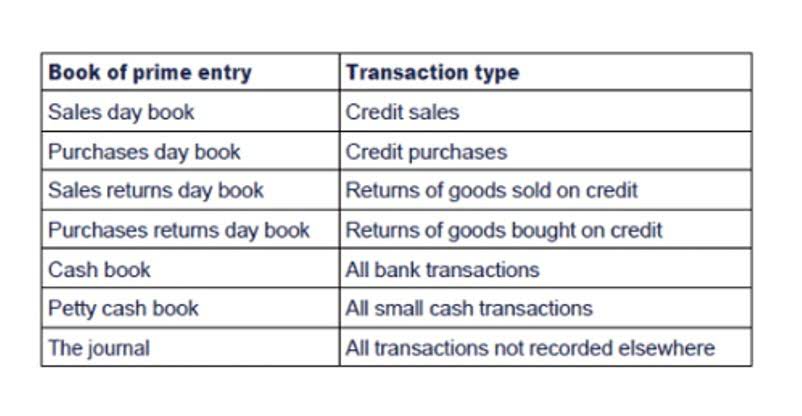
The manufacturer handles all logistics, ensuring the furniture is packed, shipped, and delivered intact to the client’s doorstep, transferring ownership only upon delivery. The International Chamber of Commerce (ICC) standardises terms like FOB through its Incoterms rules. These rules are recognised globally and help prevent misunderstandings in trade contracts by defining the responsibilities of buyers and sellers.

What are the Buyers Responsibilities?
Now assume that a seller quoted $975 FOB destination and the seller loaded the goods onto a common carrier on December 30. Also assume that the goods are on the truck until January 2, when they are unloaded at the buyer’s location. Therefore, the seller should continue to report these goods in its inventory until January 2. The seller will be responsible for the shipping costs, which will be an expense in January when the sale is reported.
- If you look at a quotation, you will usually see the unit price, FOB as the Incoterm, and a Chinese city, the shipping point.
- In international cargo shipping, FOB origin arrangements have the buyer dealing with import/export fees and charges, while in FOB destination, it’s the seller that deals with that all.
- This means that the buyer assumes responsibility for the goods as soon as they leave the seller’s premises.
- This term allows the seller to handle the shipping costs and customs clearance, reducing the buyer’s logistical burden.
- Until the items have arrived at the buyer’s location, the seller retains legal responsibility for them.
- This means that if something happens to the shipment while it is en route, they will not be liable for any damages or losses suffered.
Impact of FOB Terms on Shipping Costs and Taxes
With FOB shipping point, the buyer pays for shipping costs, in addition to any damage during shipping. The buyer is the one who would file a claim for damages if needed, as the buyer holds the title and ownership of the goods. Under Free on Board, the seller is responsible for delivering the goods to the port of departure, clearing it for export, and loading the goods on the vessel. Once the goods are on the vessel, the risk transfers from the seller to the buyer, who from that point is responsible for all costs thereafter. Decide who’s going to take fob shipping point over all transportation and landed costs from the shipping location to the final destination.
- In this guide, we’ll break down FOB shipping in simple terms – so you can make informed decisions and ship with confidence.
- We also recommend that newer importers work with a China third-party logistics company company to assist them in the process.
- The buyer and seller’s bill of sale or other agreement determines ownership; FOB status only indicates which party is responsible for the cargo from beginning to end.
- In international trade, terms like FOB shipping point and FOB destination play a crucial role in defining responsibilities between buyers and sellers.
- Shipping terms are important because of the massive worldwide volume shipped, and the need to have a common understanding of these terms for contracts.
- Understanding this impact is essential for businesses looking to optimize their supply chain and reduce transportation expenses.
Products
The earliest ICC guidelines were published in 1936, when the rail was still used – goods were passed over the rail by hand, not with a crane. Incoterms last included the balance sheet term “passing the ship’s rail” before its 2010 publishing. Shipping terms are important because of the massive worldwide volume shipped, and the need to have a common understanding of these terms for contracts. The terms affect shipping costs, liability, and even financial statements for accounting. With so many languages spoken, it makes sense to have agreed-upon terms to lessen confusion. As soon as the goods arrive at the transportation site, and are placed on a delivery vehicle, or at the shipping dock, the buyer is liable for any losses or damage that occur after.

FOB (Free on Board) is an Incoterm® referring to cargo carried via sea or inland Interior Design Bookkeeping waterway. In contrast, FOB destination is preferred for international shipping or when the seller aims to provide a more comprehensive service. As goods travel through oceans to reach their destination, charges add up, increasing the cost per unit.

Variations include FOB destination, freight prepaid (seller covers shipping costs), and FOB destination, freight collect (buyer pays shipping upon arrival). Each type adjusts the split of costs and risks, letting you tailor trade terms to your needs. The term “shipping point” might seem straightforward, but when paired with FOB, it takes on a much more nuanced meaning. A shipping point generally refers to the location where goods begin their journey to the final destination. This could be a seller’s loading dock, a shipping port, or an originating port where a freight forwarder consolidates shipments.

FOB Destination applies when the buyer takes ownership of the goods at the destination location. This means the seller bears all costs and risks until the goods have been delivered to the buyer’s specified location. Consequently, the seller is responsible for any damages or losses that occur during transit. The International Chamber of Commerce (ICC) publishes the standards for the most commonly used delivery contracts. The buyer assumes all risks and benefits of ownership as of the moment the shipment arrives at the shipping dock.
FOB Destination Vs. FOB Shipping Point: Key Differences Explained
That means the delivery port is Savannah and Incoterms definitions are referenced. Incoterms 2020 considers delivery as the point when the risk of loss or damage to the goods is transferred from the seller to the buyer. FOB destination is a logistics term that applies only to sea freight, where the vendor has the legal title and responsibility of goods until they reach the buyer’s specified location. In this scheme, the seller pays for the transportation and all extra freight costs until goods reach the buyer.
